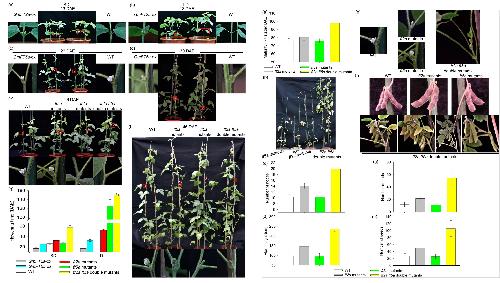Mutagenesis of GmFT2a and GmFT5a mediated by CRISPR/Cas9 contributes for expanding the regional adaptability of soybean
作者:Yupeng Cai#, Liwei Wang#, Li Chen#, Tingting Wu, Luping Liu, Shi Sun, Cunxiang Wu, Weiwei Yao, Bingjun Jiang, Shan Yuan, Tianfu Han*, Wensheng Hou*
影响因子:6.84
刊物名称:Plant Biotechnology Journal
出版年份:January 2020
doi: 10.1111/pbi.13199
https://doi.org/10.1111/pbi.13199
Abstract
Flowering time is a key agronomic trait that directly influences the successful adaptation of soybean ( Glycine max ) to diverse latitudes and farming systems. GmFT2a and GmFT5a have been extensively identified as flowering activators and integrators in soybean. Here, we identified two quantitative trait loci (QTLs) regions harboring GmFT2a and GmFT5a , respectively, associated with different genetic effects on flowering under different photoperiods. We analyzed the flowering time of transgenic plants overexpressing GmFT2a or GmFT5a , ft2a mutants, ft5a mutants and ft2a ft5a double mutants under long-day (LD) and short-day (SD) conditions. We confirmed that GmFT2a and GmFT5a are not redundant, they collectively regulate flowering time, and the effect of GmFT2a is more prominent than that of GmFT5a under SD conditions whereas GmFT5a has more significant effects than GmFT2a under LD conditions. GmFT5a , not GmFT2a , was essential for soybean to adapt to high latitude regions. The ft2a ft5a double mutants showed late flowering by about 31.3 days under SD conditions, and produced significantly increased numbers of pods and seeds per plant compared to the wild type. We speculate that these mutants may have enormous yield potential for the tropics. In addition, we examined the sequences of these two loci in 202 soybean accessions and investigated the flowering phenotypes, geographical distributions, and maturity groups within major haplotypes. These results will contribute to soybean breeding and regional adaptability.

